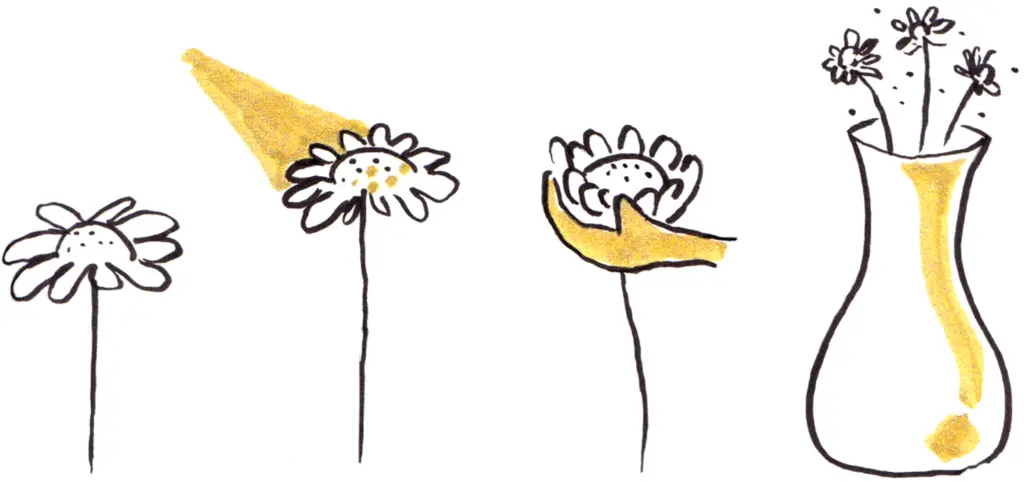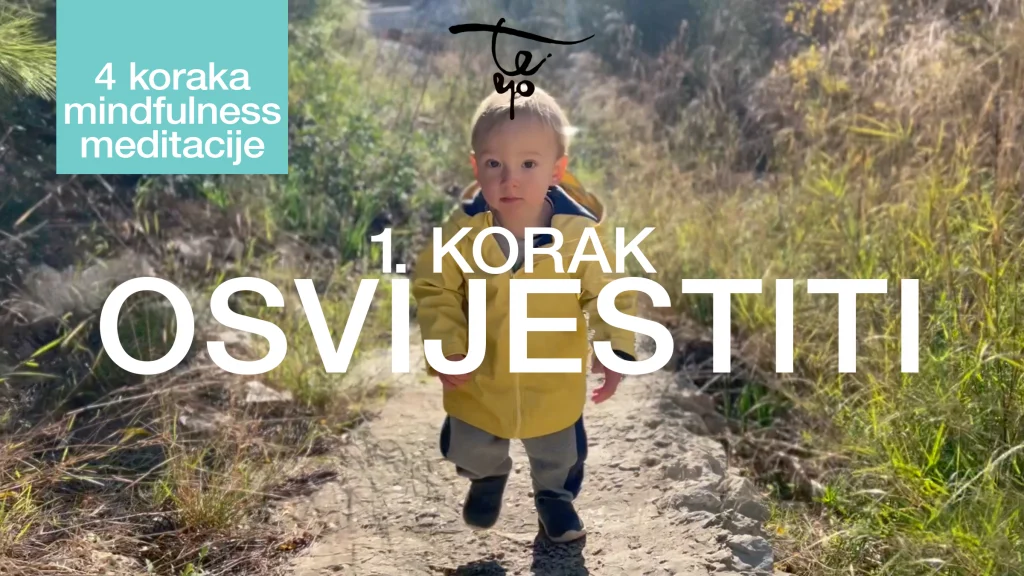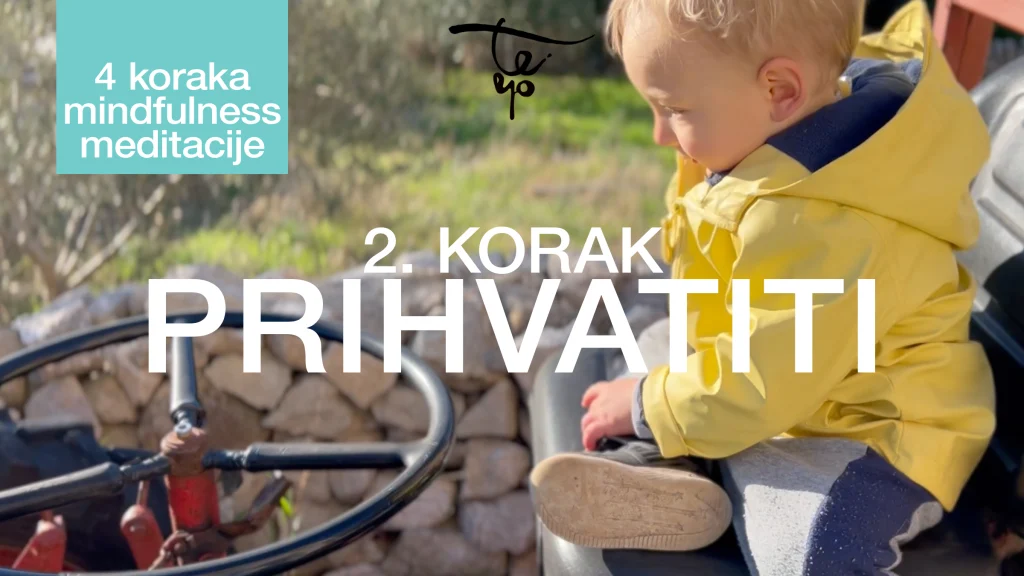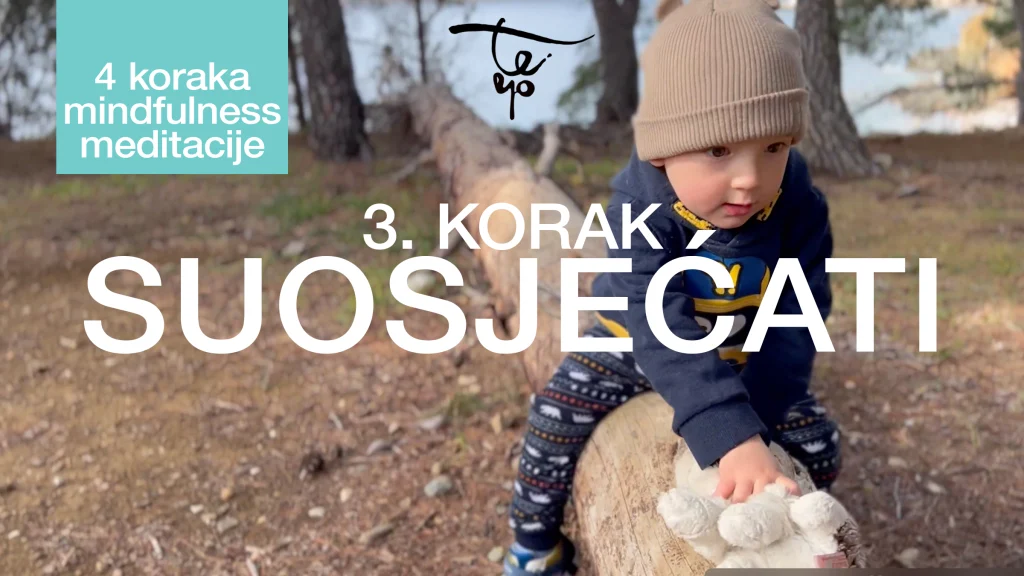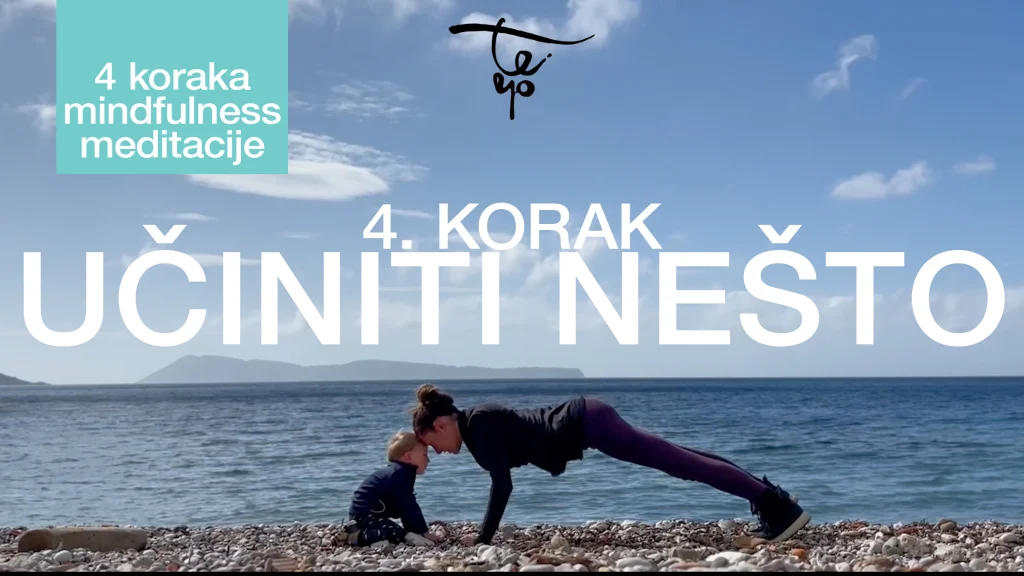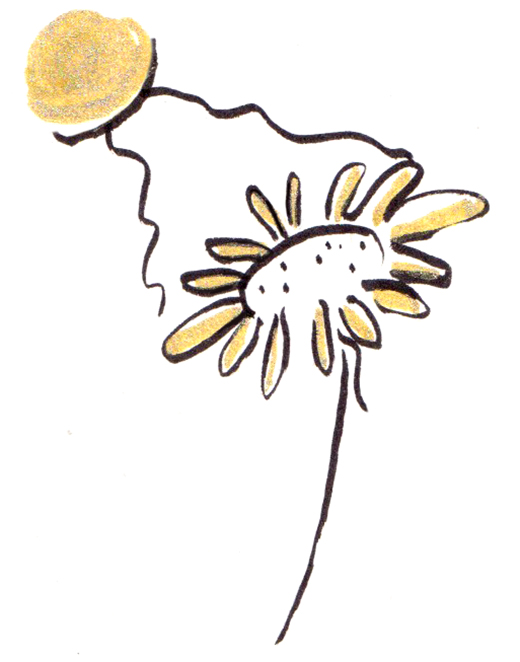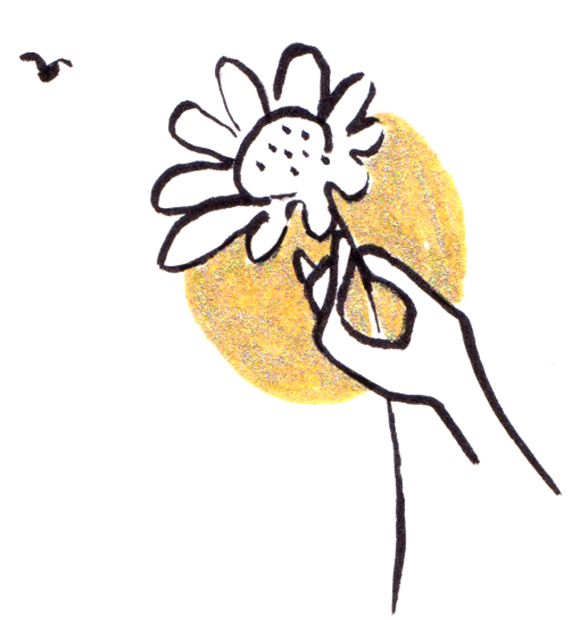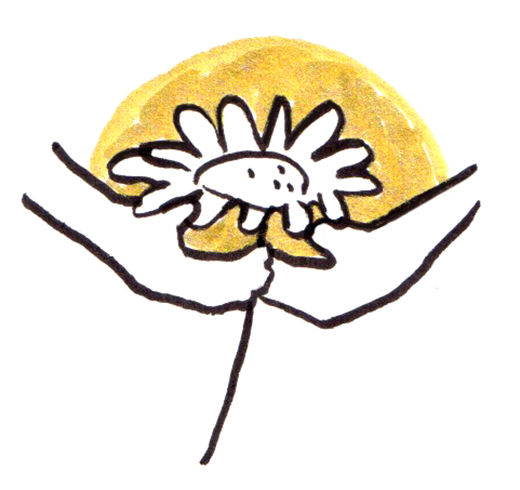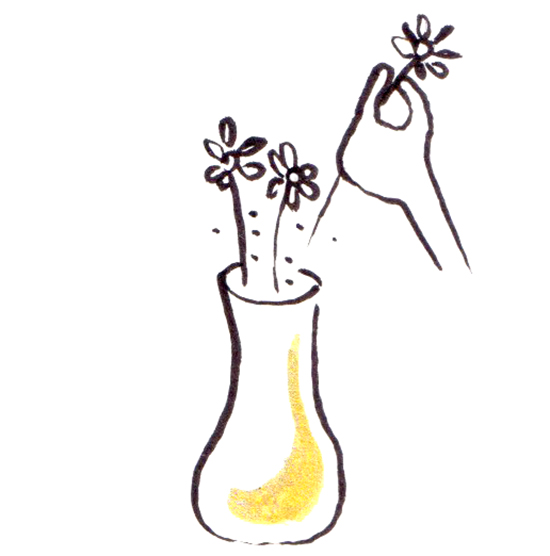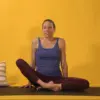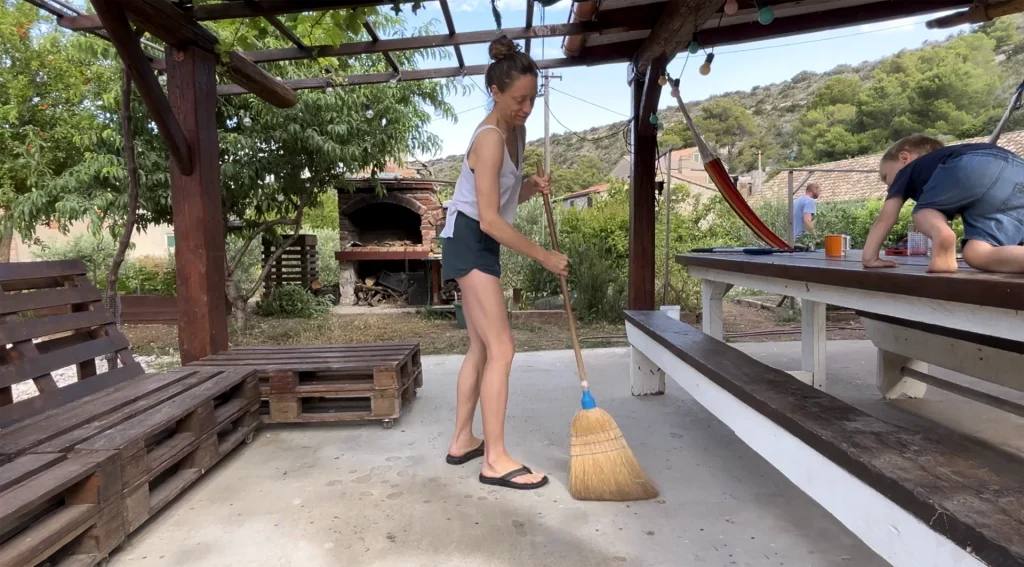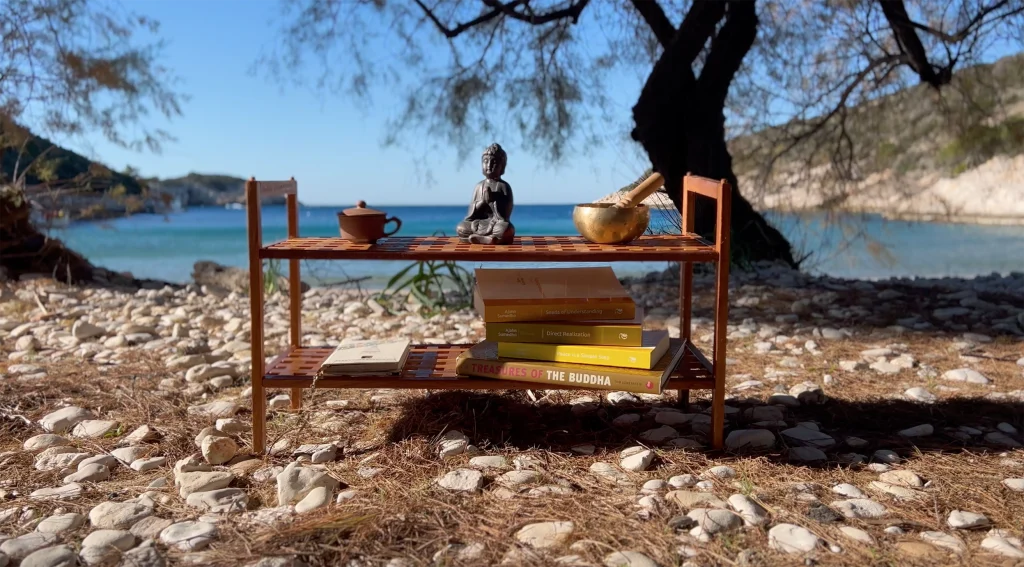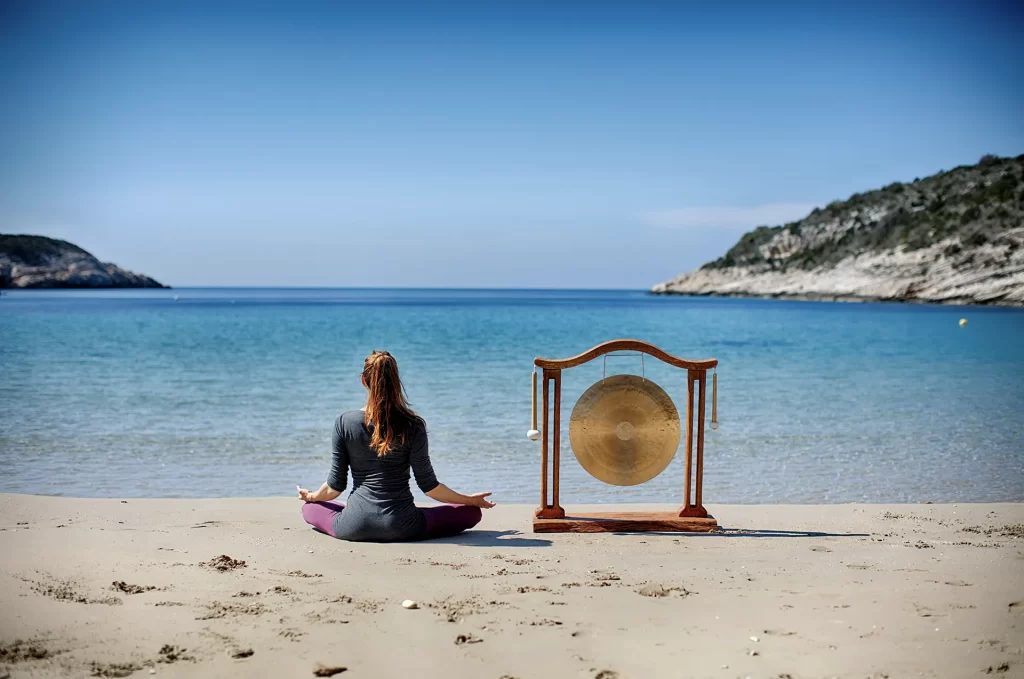Mindfulness for beginners
4 steps of mindfulness meditation
Step of mindfulness meditation – to become aware
In the first step of Mindfulness meditation, we work on awareness. This means that we become aware of what is present in our attention and where our attention is, to know what is here right now and what is happening.
Only when we know where our attention is we can change something, we can act and meditate, until we know where we are there is no instruction and no meditation.
That’s why awareness and being aware is the first step.
We practice awareness by telling ourselves that we will keep our attention on one simple object, such as the movement of the breath in the body or the present bodily sensations. If the attention is not on breathing, as soon as we catch ourselves that we “got lost”, we calmly return to breathing. The exercise of returning attention to the breath serves precisely to let go of the importance of anything else, to let go of the power of the emotions or thoughts that have taken us away. When we fall into a trance we don’t know where we are and we can’t change anything until we come to our senses.
The moment when we become aware and see: “oh my attention was not on my breath” is a moment of awareness in which we can choose again and then we choose to return to breathing again.
In meditation we observe the natural breath, we do not try to change, add or upgrade anything. We observe the sensations of breath in the body: expansion – contraction, rising – falling, length of breath and the like. If we start narrowing our attention too much and “searching” for the breath, we can become aware of a slightly wider field, the breathing body, the movement of the breath in the periphery or the position of the body. When we get caught up in wandering thoughts, we can notice if the face has frowned a little or the shoulders have lifted, so when we return to the breath, we relax the body as well.
Let’s restore the quality of a relaxed observer who becomes aware of the breathing process. We practice patiently and return as many times as necessary, until we establish continuity of attention.
Step 2 – accept
In the second step, we work on accepting what is in our attention, what distracts us or what is currently present. To accept means that we are not in aversion.
This step is crucial for them to know how to meditate.
Without sincere acceptance of the present state, we can not go any further because if we have a thought or emotion and we have not acknowledged, it means that we are fighting with it, running away from it or ignoring it, and that is non-acceptance or aversion.
I will explain best with examples:
The baby wakes me up several times in the night and asks for breastfeeding. It wakes me up from a deep sleep ten times a night – it’s really frustrating. I wake up and every time I patiently go to him and be with him until he falls asleep again. I really want to be a patient, grateful mother, but while I want to, and I’m just frustrated, desperate and tired, I don’t respect those real, currently present emotions, but out of aversion to them, I try to summon my patience. Acceptance means allowing yourself to feel the thoughts and emotions that are really there now. After I honestly allow that it’s hard for me and give myself space to experience the weight of fatigue and despair, they pass by themselves and then I can return to gratitude and patience.
Another example:
I really believe that people are not evil but just confused, I believe that malice comes from confusion and ignorance. I don’t want to have a bad opinion, gossip or say anything bad about anyone. There is one relationship in my life that is difficult for me. That person makes me angry.
While I am convinced that she is a good person who is just confused, I cannot put an end to her and set a healthy boundary. I need to allow myself to be angry, to have ugly thoughts about her, and to let my first reaction be to get away from her. Until I allow myself to do so, I have an aversion to having an aversion to her.
I feel what I feel for a reason because this person does not have a healthy boundary towards me and only when I allow myself to feel what is true for me, I can say NO. I can find an intelligent strategy to deal with what is challenging me without hurting her. Without the step of accepting my true emotions, I am in conflict with myself because I want to see the beauty of that person and I only see my anger.
Of course, I should allow the emotion of anger to be there with my “head above water”, so I let myself feel the anger, but with the intention of letting it pass, and not to cook and build on the anger, because in the end I don’t want to have a bad opinion of that person.
When I tell her NO and set my limit, I’m actually helping her because I don’t let her create these conflicting states of mind anymore.
I hope these examples explain what accepting your thoughts emotions and states is. It is the same in life as it is in formal meditation.
When we practice acceptance in formal meditation, we give space to what we have become aware of in the first step so that it can be as it is, but that we still have more capacity for peace and stability than the strength of what we need to accept.
That is very important! It means that we look restlessly with calm eyes, if we start to look restlessly with restless eyes, we should stop doing it immediately. For example, if my anger is too strong and I want to watch the sensations of anger out of anger, I will burn out and really want to react angrily, which is not constructive. In the practice of meditation, we work on accepting what is there as if we “breathe out and surrender”, open ourselves to the emotion to understand it and allow ourselves to feel it.
We try to create a wider space than the emotion itself, in which that emotion can be as it is right now without pushing it away or identifying with it.
The quality of accepting the current state is the ability to see it as if we are a little outside, that we are not immersed, that our consciousness is wider, that we are a witness who calmly watches what is happening. In the body, it feels like the relaxation of the muscles that have been activated. When we have reacted to a thought, we often automatically make a facial expression, clench our teeth or raise our shoulders, so when we become conscious, we notice how it feels in the body and relax the spasms. When the intensity of that state subsides and the attention is “free” again, we can return it to the breath or the body as in the first step.
The breath is the best object of meditation because we do not need to accept it, it is self-evident, we have no desire for it to be there or aversion because it is there.
We are aware that we are breathing naturally and calmly. Let’s remember that meditation is not about following your breathing, but about respecting the current processes and taking the right attitude towards it.
Step 3 – adopt a compassionate attitude
This step is closely related to the previous one because it teaches us HOW to accept, more precisely it teaches us which relationship to establish in order to accept in the healthiest way.
In this step we learn true compassion. It is an honest acceptance of discomfort in which we do not try to pretend that it is not there or that it is not challenging, to really feel the pain and open up to it is the intelligence of compassion. The word itself means “to feel what is felt” – to co-feel. To sympathize is a verb that calls us to action, because when we see pain we have a sincere desire to alleviate it. However, I repeat only after we have felt and accepted it.
The best example to understand a compassionate attitude is a mother holding her crying child in her arms. The mother is fully present for the child’s pain, holding the child and trying to ease the pain with her touches and kisses. He has unconditional, uncompromising compassion and patience. The child will cry as long as it needs to, and the mother will be a safe, watchful space of understanding all the time and will do everything she can to ease the pain or solve the problem. That’s how we hold onto our pain.
In the practice of meditation, in this step we practice the relationship we have with what is present.
Let’s decide that we want to develop compassion, and to be a victim and fall into despair. When we decide to do so, we change our thoughts from thinking that it is difficult now and that it shouldn’t be like that to thinking that we should encourage ourselves and look at what is here now, because we know that it will pass and that only now, when it is present, can we open up and feel this emotion as energy in the body. We say to ourselves, let me understand this pain (discomfort or condition). Let me accept, have patience and relax with her and around her. May I be free from aversion to pain and discomfort.
Also following on from the previous step, here we will express our compassion by relaxing the body and the muscles that have contracted. Let’s put a small inner smile that does not serve to push away the present state but to express that friendly relationship. The inner smile that fills that wider space and gives faith that we are here until it passes.
If we want something to pass and we pretend to accept it, but we have a hidden aversion, that is again not sincere acceptance or sympathy and will probably only increase the aversion. With acceptance and compassion, there is no bargaining or cheating.
There are two thoughts that can sober us up and put us in the right, compassionate place:
First:
If we have a problem that we can solve, we start solving it. If there’s something we can’t change, then it’s not a problem, we should learn to accept it (such as the nature of transience and all that comes with it). In a short time we either act or accept, if we complain and mourn it is time to awaken our compassion.
Second:
We are free if we want to be there, and in prison (which we make ourselves) if we don’t want to be there (with what is here now). That’s why we make an effort to want to be there with ourselves, because only then are we free.
We ask ourselves “what can I do to help myself in this situation, to adopt a good attitude and to have a healthy relationship with what I feel”?
Step 4 – do something to change your energy
When there is something present that we cannot accept or in which we need help (what we cannot see with calm eyes) we need to do something. If we are restless and have too many thoughts to calmly follow natural breathing, we start with a slightly deeper breath that is easier to follow, we can work on establishing the same length of inhalation and exhalation or add a simple movement connected to breathing, for example raising the arms on inhalation and lowering them on exhalation.
After we breathe out and establish the regulation of the nervous system with the breath, we can try to return to the observation of the natural breath or for this hour of meditation continue to breathe an extended, more accentuated breath. Emphasizing the inhale helps when the mind is tired, and emphasizing the exhale helps with an overactive, restless mind.
Then we repeat the same return formula again:
I notice – I relax about it – I stay with my breath and body and become a wide space. If we don’t know where we are at all and we don’t have a bit of peace in our body, maybe it’s not time to meditate, it’s better to start with a conscious movement or take a walk.
As in the steps up to now, if we get an aversion that we don’t want to feel how we feel and enter into a fight, this step is no longer effective either. Only with honest attitudes from steps 1, 2 and 3 can we work to change the current situation.
Let’s honestly become aware, accept and turn on compassion and act from that – breathe and exercise.
Conclusion
In Mindfulness meditation we train an alert and compassionate attitude towards all the states we feel (thoughts, emotions and bodily sensations), which leads to carefully considered and smartly implemented action. Aversion, non-acceptance, judgment, and the desire to be different than it is at present are synonyms.
We need to recognize them and stop thinking because by believing these thoughts we keep ourselves in prison that now is not good enough and that we are not where we should be.
Frequently asked questions
1. Do I need to be without thoughts in mindfulness meditation?
Thoughts are a natural process, we do not meditate to be in a state where they are not there. We meditate to know what we are thinking and feeling and to catch ourselves in the reaction we have to thoughts and feelings.
2. When I have a very restless mind, with many thoughts, what should I do?
If it is difficult to observe and calm down, we move on to the 4th step, which is to start doing something with full attention. Movement of the body through yoga or similar practices can be a great meditation in motion. Then the mind has more space and greater sensations on which to base its attention.
3. I want to meditate but I’m distracted by the current problem I have, how do I go back to observing my breath?
It’s okay to address whatever is most intense or present in that moment. If we want peace, and a pink elephant has come to us, we should appreciate that it is there. The pink elephant is our current distraction and it’s too big to ignore. As long as our nervous system is “grinding” (some conflict, problem, emotion) we should let it talk because otherwise in meditation we are just fighting with our breath, and in fact we should appreciate and accept what is here now.
4. I want to solve anxiety with meditation, but when I observe anxiety I just get more anxious, what am I doing wrong?
A quiet and unnoticed aversion to anxiety probably crept in. If we start meditation with the idea that we will solve something, it means that we do not accept this as it is. With meditation, we do not solve or “cleanse” a state, but rather learn to become aware and accept it, and then act from that attitude. Let’s go back to steps 2 and 3 and accept and build genuine compassion.
For private consultations and meditation mentoring, contact me at info@tena.yoga or join my regular online yoga program.
